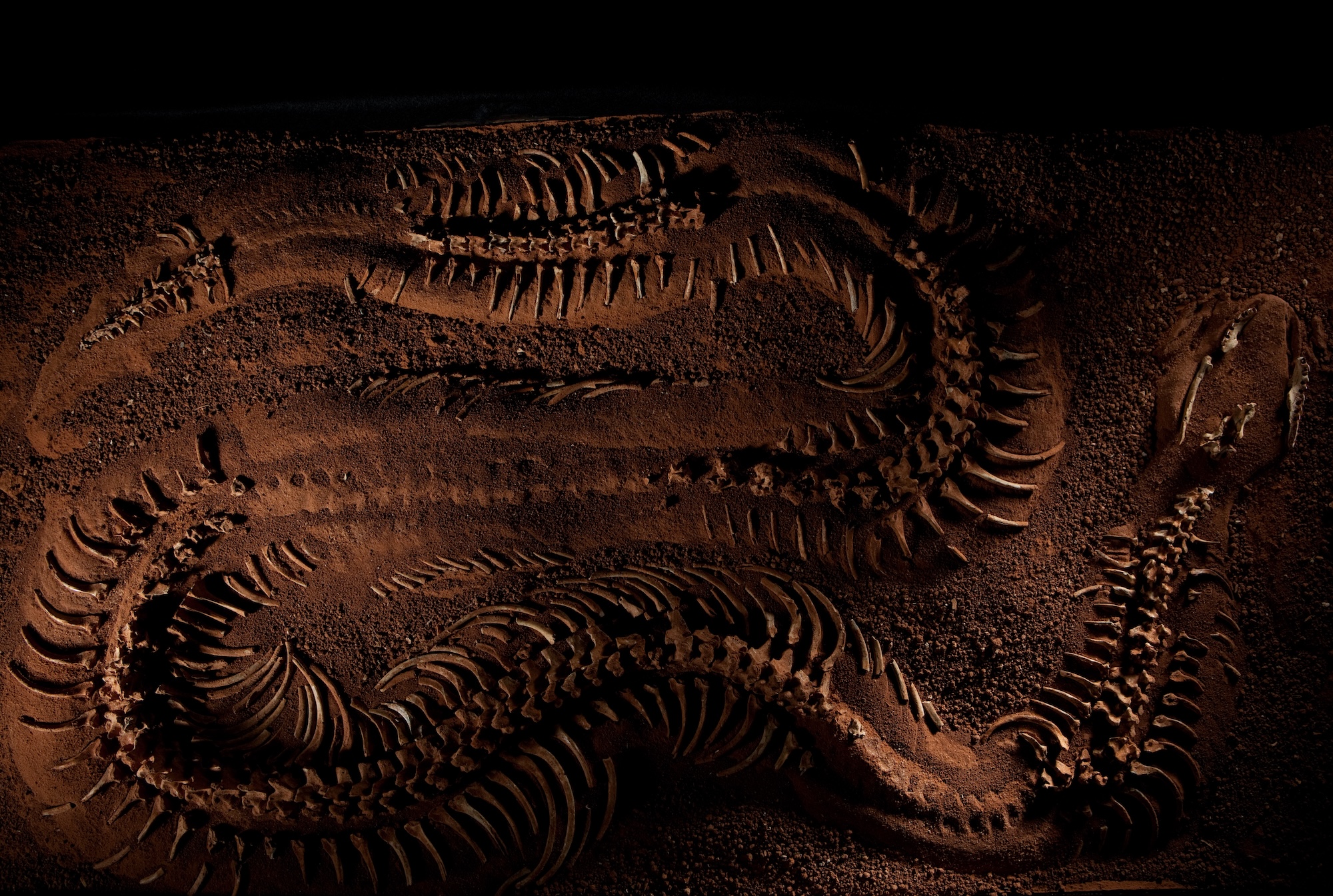Two researchers discovered what may be the longest snake ever to have crawled across the continent when they uncovered the fossilized remains of a partial vertebral column in Western India. Measurements and calculations by the researchers determined the ancient snake, identified as Vasuki indicus, grew about longer than a school bus.
A pair of biologists from the India Institute of Technology Roorkee published an article in Scientific Reports this spring about their wild discovery in the Panandhro Lignite Mine in Western India. They say Vasuki could be the longest and largest specimen of the extinct madtsoiid snake family in the world. These gargantuan constrictors were found in what is now Madagascar, South America, India, Africa, and the European archipelago from the Cretaceous period through the Cenozoic era, or some 100,000 to 125 million years ago. The earliest madtsoiid snakes lived on the supercontinent known as Gondwana, or the landmass consisting of Africa, Europe, and the Americas before they dispersed through continental drift. While Vasuki likely didn’t show up until some 60 million years ago, it was probably the biggest snake of all, reaching upwards of 45 feet long and weighing over a ton.
“Our … estimations show that Vasuki was not only the largest madtsoiid [snake] but one of the largest snakes ever reported,” the authors write.

The warm, tropical climate of the region and era that the giant snake lived help explain their overwhelming size. These snakes lived in weather with an average temperature of 82 degrees Fahrenheit. They were probably so big they couldn’t live in trees, according to the biologists best guess, and the fossils didn’t indicate that they were water-dwelling snakes, either. Rather, the enormous species probably lived on swampy ground near water, a habitat typical to the area where the fossils were found.
As far as size goes, the only direct competitor of Vasuki indicus for the honor of “biggest snake ever” is Titanoboa cerrejonensis, a water snake that lived in the Middle and Late Pleistocene. The first Titanoboa fossils were discovered in modern-day Colombia in the early 2000s by the Smithsonian Tropical Research Institute. Titanoboa likely grew up to 49 feet long, and also weighed over 2,500 pounds. (If you want some nightmare fuel, check out the Smithsonian movie Titanoboa: Monster Snake.)

“It is worth noting that the largest body-length estimates of Vasuki appear to exceed that of Titanoboa, even though the vertebral dimensions of [Vasuki] are slightly smaller than those of Titanoboa,” the authors write.
Read Next: Monsters in the Marsh
In other words, it’s not clear which snake actually ruled across Earth’s history, and to draw any concrete conclusions from a handful of vertebrae is speculation at best. But if either species were alive today, they’d give our modern-day python hunters a run for their money.

